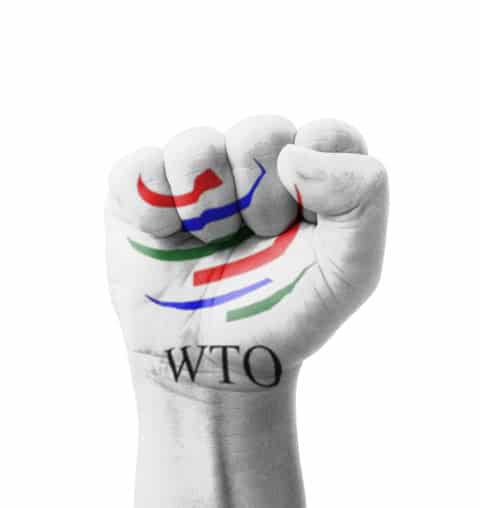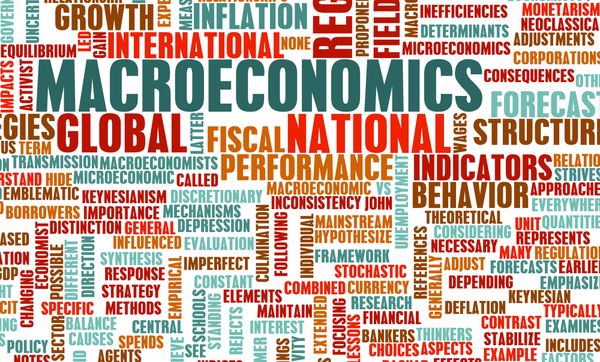
The WTO's Most Favored Nation Rule

WTO rules
In the event of a no-deal Brexit, the UK would fall back on the World Trade Organisation (WTO) rules. There are two main WTO agreements – the General Agreement on Tariffs and Trade (GATT) and the General Agreement on Trade in Services (GATS). There are common rules that govern trade in goods and services, the most significant of which is the Most Favoured Nation (MFN) rule. The MFN rule is the core principle of the WTO, and first appeared in the GATT agreement of 1947 (GATT Article 1:1) which came into force on 1st January, 1948. The UK is free to fall back on the WTO given that it still remains an individual member – as do all EU countries. When countries joined the EU they retained their individual membership rights.
What is the MFN rule?
The main principle of the MFN rule is that members must not be discriminated against, except to protect themselves from unfair competition, or to maintain food and other standards. It is also accepted that preferential treatment can be given to developing countries. With these exceptions noted, the general rule is that, in the absence of a specific free trade agreement (which allow tariffs to be set below the MFN rate), all WTO members will enjoy the same treatment as the most favoured country. Hence, if one member grants another member a special favour, such as a lower tariff, then this favour should be extended to all other members. This means that trade liberalisation is promoted, given that the benefit of any agreement between two countries to bring down barriers is likely to have wider free trade effects on other trading partners. The MFN approach is widely regarded as contributing to the growth and prosperity of the global economy as it makes it far more likely that countries will import from the most efficient supplier, in accordance with the principle of comparative advantage.
How the MFN rule affects Brexit
Once outside the EU, the UK would be treated as a ‘third-party country’ and would, of course, be free to reduce tariffs on imports – say on New Zealand lamb – however, the WTO rules state that the UK would also have to reduce tariffs on lamb from other WTO members to the same level enjoyed by New Zealand.
For example, the current EU ad valorem tariff rate on New Zealand meat imports is 12.8%. There is also a quota arrangement which allows the EU to import a given quantity of New Zealand lamb on a tariff free basis – once the quota is reached, the tariff comes into effect. Such quota plus tariff arrangements are called Tariff Rate Quotas (TRQs), and are common on agricultural products. If the UK wishes to reduce tariffs on New Zealand lamb – say to 10% – (or alter the quota) it will have to reduce it to 10% for all countries looking to sell lamb into the UK. Similarly, New Zealand cannot place different tariffs on UK exports and EU exports. The only way around this, under WTO rules, is to come up with a special agreement between the two countries. For example, New Zealand could agree to reduce duties on UK produced cars, while the UK agrees to reduce tariffs on New Zealand produced lamb. To make full sense of trade between the UK and New Zealand the more goods that are covered, the better, leading to a ‘comprehensive free trade agreement’.
Once the UK leaves the EU it will need to establish its own MFN schedules and have them approved by all other WTO Members, but it is most likely that these will remain at the current EU levels. Under WTO rules the UK will be allowed to continue to operate these ‘uncertified’ schedules until formally certified.
The UK will also need to negotiate a large number of free trade agreements to prevent the general operation of the MFN rule (GATT Article XXIV). Of course, there is nothing stopping the EU also renegotiating any existing free trade arrangements once the UK leaves. In fact, preparation for formal trade talks between New Zealand and the EU has already been sanctioned by the EU in May 2018. So, this may well mean that any preferential arrangement between the UK and New Zealand, which favours UK exporters, could be wiped away before it even comes into effect. This is because there is no rule saying that the EU cannot negotiate more trade deals while Brexit talks continue, while the UK cannot.
The situation is made even more complex in that most ‘modern’ trade deals have a “forward” MFN arrangement – meaning that the parties to the agreement have guaranteed that they have granted each other the best possible terms. This means that if a new trade agreement with a third party is constructed on better terms than existing deals, the previous deals will be ‘upgraded’ to the new level – the new benefit will be applied without any ability to negotiate a beneficial trade-off.
For example, in the case of Canada (having recently signed its Comprehensive Economic and Trade Agreement (CETA) with the EU) there is an MFN rule in place for investment (Chapter 8 on investment) – this means that the EU cannot offer the UK a better deal than with Canada, or it must offer Canada the same deal if that happens. This is one reason why the EU may not want to offer generous open access to the UK – especially in terms of financial services. The MFN rule certainly acts as a constraint on what the EU is willing to offer.
New trade agreements – some issues
Once the transition phase is over it is likely that the UK will maintain existing tariff schedules and ‘roll over’ many of the agreements that already exist between the EU and third parties, and incorporate them into the UK legal context. Part of the negotiation process with the EU will involve agreeing the re-allocation of agricultural quotas to imports as these are EU-wide negotiated levels. Given that market access to third-parties (including the level of tariffs and any quotas) will have been agreed by the EU as a bloc, reflecting the EU’s bargaining power, it is likely that third-parties will see Brexit as an opportunity to renegotiate more favourable trade deals with the UK.
In an attempt to speed up this process, the Department for International Trade (DIT) has already made contact with around 70 third-party countries to EU trade agreements. Most experts accept that simply ‘cutting and pasting’ existing agreements will not be possible, given the likelihood that these countries will look to renegotiate. There is clearly a limit to which new trade agreements can be made until the UK and EU complete their own negotiations. What is clear is that the MFN rule will have a considerable impact, not only in terms of negotiating the UK’s withdrawal, but in terms of shaping the UK’s future trade deals.
For all of these reasons a possible outcome for a future trading relationship between the UK and EU is a CETA-style agreement. While this is something ruled out by the UK government from the outset, it is one that both sides might agree.
More on CETA


